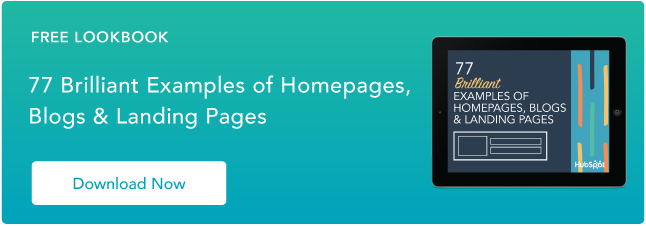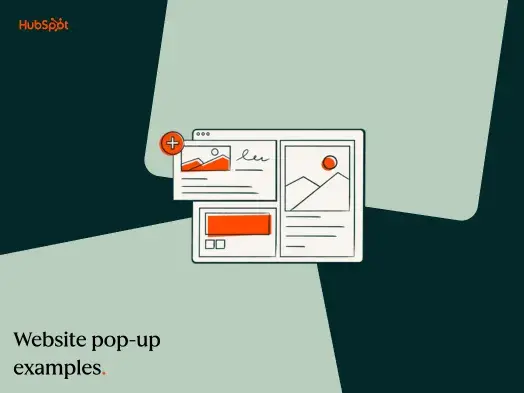This personal experience reinforces the value of well-curated literature in our professional growth. It’s not just about learning; it’s about understanding deeply and completely. It’s this understanding that propels us from being practitioners to being experts.
So, I embarked on a journey to make a list of helpful web design books. Dive in as we explore these treasured resources that have shaped careers and crafted masterpieces in the digital realm.
The Best Web Design Books
Web design is an ever-evolving field, with new trends and technologies emerging constantly. Whether you’re a seasoned professional looking to expand your skill set or a newcomer eager to get started, having a solid educational foundation is key.
Books are an excellent resource, providing in-depth knowledge and insights from industry leaders’ life work. Here’s a curated list of 10 must-read books for web designers and developers at all levels.
1. Learning Web Design: A Beginner’s Guide to HTML, CSS, JavaScript, and Web Graphics by Jennifer Robins
Best Comprehensive Guide for Beginners
Learning Web Design by Jennifer Robbins is a quintessential starting point for anyone new to web development. This book, spanning a detailed 810 pages, provides a thorough introduction to the essential languages of web design. It’s crafted for those who have never written a line of code, taking you through HTML, CSS, JavaScript, and web graphics with a clear, hands-on approach.
This edition is structured to offer:
-
Fundamentals of HTML and web structure.
-
Styling pages effectively with CSS.
-
Basics of JavaScript for interactive websites.
-
Creating and optimizing web graphics.
Jennifer Robbins’ guide is praised for its depth and breadth, making it a valued recommendation for anyone looking to delve into web design. Whether you’re aiming to tweak your personal blog or aspiring to become a professional web designer, this book is an excellent foundation that grows with you, clarifying the path from beginner to expert.
2. Web Design Playground: HTML & CSS The Interactive Way by Paul McFedries
Best Hands-On Experience for Web Design Learners
Web Design Playground takes you on an interactive journey through the world of web design. With 352 pages full of practical tutorials, McFedries makes learning HTML and CSS not just informative but also incredibly engaging.
This book is perfect for those who prefer a more hands-on approach to learning, providing a sandbox environment where you can experiment with code and see immediate results.
The content is divided into key areas that help you grasp the essentials of web design:
-
Understanding how HTML elements form the structure of web pages.
-
Learning CSS properties to style and layout your content.
-
Using interactive examples to reinforce your coding skills.
-
Access to an online playground for real-time coding practice.
Jason Carter, a verified purchaser, says: “This is exactly what I was looking for in a web design book! It takes you from the very basics and then walks you through more advanced design techniques, thoroughly explaining how everything works.”
This glowing endorsement from a real-world user underscores the book’s value in offering a comprehensive and interactive learning experience. Web Design Playground is an invitation to play, learn, and create — a fitting guide for anyone looking to master web design in a way that is both fun and effective.
3. The Principles of Beautiful Web Design by Jason Beaird, Alex Walker, and James George
Top Pick for Mastering Web Design Aesthetics
When I discovered The Principles of Beautiful Web Design, I knew I had found a resource that resonated with my design philosophy. The third edition of this book, which spans approximately 220 pages, is an artistic voyage into creating websites that are not only functional but also visually captivating.
In my experience, the book covers essential design elements such as:
-
Layout and spatial relationships in web design.
-
Color theory and its application in creating mood and visual coherence.
-
Texture and its role in depth and interest.
-
Typography as a cornerstone of design usability.
-
The incorporation of imagery to enhance aesthetics and narrative.
I particularly appreciate how each chapter delves into these topics, offering actionable insights on how to apply these principles to real-world projects. I’ve found the third edition especially helpful, as it includes the latest trends and considerations in web design, ensuring my work remains current and impactful.
For those looking to download the third edition, it’s readily available, and I encourage you to explore its rich content. It’s been a staple in my design toolkit, a book I often return to for inspiration and guidance.
4. 6 Practical WordPress Projects by the SitePoint Team
Go-To Resource for Real-World WordPress Applications
When I was looking to enhance my WordPress skills with real-world applications, 6 Practical WordPress Projectsby the SitePoint Team became my go-to resource. This book is an ideal blend of theory and practice, spanning over 300 pages of insightful tutorials and projects that bridge the gap between learning and doing.
From my experience, the book dives into:
-
Setting up custom post types and taxonomies to structure content effectively.
-
Developing themes that respond to user needs and industry trends.
-
Implementing plugins to extend the functionality of a WordPress site.
-
Crafting a user experience that’s both intuitive and engaging.
-
Integrating ecommerce solutions to build fully functional online stores.
Glenn Cogar’s recommendation resonated with me: “It’s good to have some mini projects to focus on when learning new stuff, and this book provides some interesting sample projects to focus on while learning new things about WP.”
For those of you who are avid WordPress enthusiasts or looking to deepen your understanding even further, my colleague Antonella Gina Fleitas has compiled an excellent list of resources in her blog article “15 WordPress Books To Read in 2023.” It’s a fantastic next step for anyone looking to expand their WordPress knowledge.
5. Murach’s HTML and CSS: Training & Reference by Zak Ruvalcaba and Anne Boehm
Best Interactive Guide for Learning HTML and CSS
Starting out in web development can be overwhelming, but Murach’s HTML and CSS: Training & Reference turns that challenge into an adventure. This book is not just about reading. It’s about doing.
With an extensive 736 pages, Ruvalcaba and Boehm guide you through the critical concepts of HTML and CSS with a hands-on approach that’s highly effective for beginners.
The book is designed to help you build a strong foundation with step-by-step guides that cover:
-
HTML essentials for structuring your web pages.
-
CSS techniques for styling.
-
Layout strategies for a responsive design.
-
Practical exercises to apply your knowledge immediately.
Kaitlin Milliken, a program manager at HubSpot, shares her experience.
“When I started my coding journey, I had only ever altered my theme in a Tumblr blog. This book provided step-by-step guides so I could learn two brand-new languages,” she says. “I loved how there were exercises where I could code along and test my knowledge. Who knew a book could be so interactive for computer programming?”
This recommendation highlights the book’s approach to learning that engages readers beyond the basics, offering interactive exercises that reinforce the material. As web design continues to evolve, having a book that not only teaches you the fundamentals but also involves you in the learning process is invaluable.
6. HTML and CSS: Design and Build Websites by Jon Duckett
A Favorite for Comprehensive Learning
As someone who values both depth and accessibility in educational resources, HTML and CSS: Design and Build Websites by Jon Duckett has earned its place as a personal favorite on my bookshelf. This visually rich guide spans 490 pages and is a testament to Duckett’s ability to make learning about coding not just comprehensive but also remarkably accessible.
In this book, Duckett masterfully covers:
-
The basics of HTML and CSS.
-
Web design principles.
-
Techniques for creating beautiful websites.
-
Coding practices to make your work stand out.
This book is an invaluable tool for anyone starting out or wanting to solidify their understanding of web development. Its engaging layout and clear explanations demystify the technicalities of coding, making it a must-read for learners who aspire to create clean, responsive, and aesthetically pleasing websites.
7. Don’t Make Me Think: A Common Sense Approach to Web Usability by Steve Krug
Best Book for Intuitive Usability in Web Design
Before you dive into Don't Make Me Think, it’s helpful to understand that this book isn’t about high-level coding — it’s about the fundamental principles of user-friendly design. Ensure you’re ready to think about how users interact with websites beyond the technical construction. A basic knowledge of web design practices would suffice to get the most out of Krug’s insights.
Within its engaging 216 pages, Krug tackles web usability with humor and clarity, presenting concepts that will transform how you create and think about websites. The book is structured into concise chapters that cover a range of topics, including:
-
How we really use the web.
-
Building sites that people can understand in a snap.
-
Getting rid of unnecessary elements.
-
Making effective navigation.
-
Conducting simple usability testing.
As recommended by Jamie Juviler from HubSpot’s Website Blog, this book is a must-read not because it’s a deep dive into the tech world but because it simplifies the complex into the understandable.
“It’s a fun and approachable guide that packs a surprising amount of wisdom into each chapter,” Juviler notes. The latest edition also touches on mobile usability, reflecting the current landscape where responsive design is non-negotiable.
To make the most of this book, be sure to grab the latest edition, which extends Krug’s principles to mobile design — a critical aspect that no web designer can afford to overlook.
8. UX Design 2020: The Ultimate Beginner’s Guide to User Experience by Theo Farrington
Top Recommendation for Beginners in UX
UX Design 2020 has been a game-changer for me as I navigated the foundational aspects of user experience design. Theo Farrington offers a contemporary and concise introduction over the course of 320 pages that are filled with realistic, real-world examples that bring the concepts to life.
Key areas covered in the book include:
-
Understanding user behavior and needs.
-
Principles of designing intuitive user interfaces.
-
Techniques for conducting user research and testing.
-
Strategies for designing for different devices and platforms.
Adrienne Grace, with her vast experience, has praised this book, noting it as “a great intro/overview for beginners, using realistic, real-world examples.” Her endorsement is a testament to the book’s ability to make the complex field of UX accessible to novices.
For those just starting out or seeking to understand UX principles, this guide is an invaluable resource. Its approach to teaching through practical examples not only informs but also empowers you to apply the principles in your own design projects.
9. UX Strategy: How to Devise Innovative Digital Products that People Want by Jaime Levy
A Comprehensive Resource for UX Strategy
In the world of UX design, where strategy is just as important as aesthetics, UX Strategy by Jaime Levy has been a cornerstone of my personal library. This book, a substantial read with 312 pages, serves as a complete guide for becoming a practical, strategic designer — especially useful when assisting entrepreneurs in validating business ideas.
The book delves into important topics like:
-
The intersection of business strategy and user experience.
-
Methods for research and analysis to inform UX strategy.
-
Frameworks for designing business models with a user-centric approach.
-
Case studies on how UX strategy is applied in the real world.
For those who are not just looking to design but also aim to impact the market and user behavior, this book is an invaluable resource. Furthermore, to enhance your understanding, there’s a podcast episode featuring Jaime Levy discussing the book, offering additional context and depth to the strategic conversations within its pages.
10. Learning PHP, MySQL & JavaScript; with jQuery, CSS & HTML5 by Robin Nixon
A Solid Foundation for Integrating Key Web Technologies
Robin Nixon’s book offers a foundational exploration into some of the most important technologies used in modern web development. Over the course of approximately 700 pages, readers are guided through the integration of PHP, MySQL, and JavaScript — complemented by jQuery, CSS, and HTML5 — to create dynamic websites.
This guide includes:
-
Core PHP syntax and MySQL integration for server-side scripting.
-
JavaScript essentials for interactive web pages.
-
Leveraging jQuery for streamlined script writing.
-
CSS and HTML5 for responsive design and advanced web graphics.
For newcomers looking for a structured path to developing their web development skills, this book presents just the right mix of breadth and depth. It is an ideal resource for laying down the groundwork for these key technologies.
Stocking Your Shelves
In closing, this curated selection of web design books bridges the gap between novice enthusiasm and professional expertise. Each book has been chosen not only for its rich content but also for its ability to illuminate the path forward in the ever-changing landscape of web design. They are not just repositories of knowledge but beacons that guide through the intricacies of the digital realm.
Whether through the written page or the shared wisdom of a podcast, the knowledge within these books is waiting to be applied in the creation of the next generation of web marvels.
Website Design
.png?width=112&height=112&name=Image%20Hackathon%20%E2%80%93%20Vertical%20(50).png)

.png)







![Creating a Web Design Contract That Keeps Your Project on Track [+ Expert Tips]](https://53.fs1.hubspotusercontent-na1.net/hubfs/53/web-design-contract-1-20250312-1603286.webp)

![The Podcaster's Guide to Embedding Your Show on Your Website [+Step-by-Step Tutorial]](https://53.fs1.hubspotusercontent-na1.net/hubfs/53/embed-podcast-on-website-1-20250226-2656001.webp)
